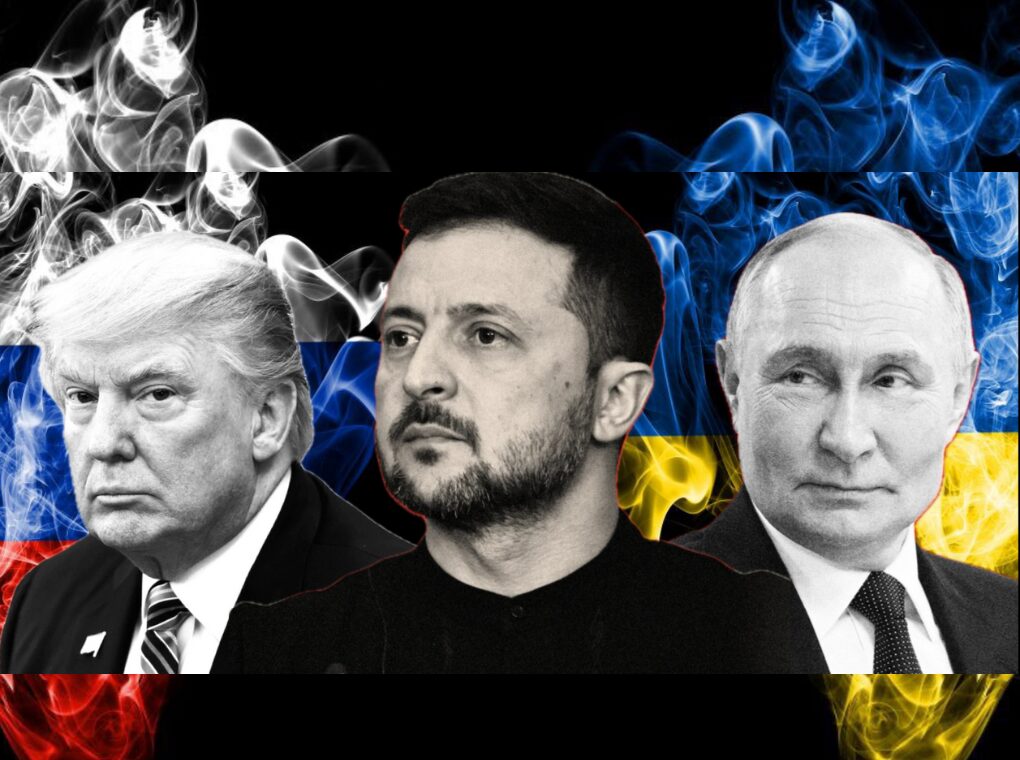Ukraine is reportedly offering an extensive $150 billion security package to the United States, a move designed to appeal to President Donald Trump’s “America First” economic agenda as he shifts toward promoting peace talks favorable to Russia following his recent direct discussions with Vladimir Putin. This ambitious proposal, presented prior to Ukrainian President Volodymyr Zelenskyy’s visit to the White House, outlines $100 billion in European-funded purchases of American weaponry and a $50 billion joint venture focused on drone production. Kyiv is strategically framing this deal as a win for U.S. industry, aiming to align with Trump’s preference for strong economic benefits to America from foreign policy.
Ukraine’s $150 Billion Security Offer
During a White House meeting with Zelenskyy and several European leaders, Trump announced on his social media platform, Truth Social, that following these engagements, he had initiated contact with Putin to arrange talks between the Russian and Ukrainian presidents. He also revealed plans for a trilateral summit involving all three leaders, emphasizing widespread optimism around the prospect of peace between Russia and Ukraine.
Trump’s Diplomatic Initiative and the Prospect of Peace
This turn signals a perceptible shift in Trump’s posture, increasingly sympathetic to Moscow’s viewpoint. According to sources, Putin offered a willingness to meet with Zelenskyy, and Trump claimed that Putin consented to Western security guarantees for Ukraine but explicitly excluded NATO membership—a critical concession that Ukraine has long insisted upon. Zelenskyy described his private Oval Office meeting with Trump as the “best” they have had, a stark contrast to earlier this year when tensions were high and Trump’s administration publicly criticized Zelenskyy for perceived ingratitude over U.S. military aid.
Diverging Views on Security Guarantees and NATO
One of the central topics discussed was the exploration of NATO-like security guarantees for Ukraine as an alternative to formal alliance membership. European officials, many of whom were excluded from Trump’s earlier direct talks with Putin, argued that only robust and credible guarantees could deter renewed Russian escalation. The complexity of forging such agreements, however, was evident, as divergent views emerged not just between the US and Ukraine, but among European partners as well. Trump projected cautious optimism about the near future, stating that within a week or two, the world might witness either progress toward resolving the conflict or continued, intense fighting.
The Lingering Tensions Over Crimea and NATO
Despite these diplomatic advances, unresolved tensions linger. Trump has put forward the idea that Ukraine should consider relinquishing Crimea and abandoning its pursuit of NATO membership. On a recent occasion, he urged European leaders to discuss potential territorial exchanges as a foundation for any peace agreement, suggesting concessions that would significantly reshape the current landscape.
In response, Ukraine has remained firm in rejecting Russia’s proposal to freeze front lines, emphasizing that any negotiations must begin with an immediate ceasefire. Furthermore, Kyiv insists that a lasting peace framework must be robustly supported by Western security assurances, not shaped by compromises that reward Russian territorial gains.
Ukraine’s Firm Stance on Ceasefire and Security
The $150 billion security proposal underscores Ukraine’s effort to appeal strategically to U.S. economic interests, packaging military aid as an opportunity for American industries rather than a one-sided handout. This approach intends to win favor with political actors who prioritize national economic benefit alongside geopolitical strategy. Through this lens, Ukraine hopes to sustain and possibly enhance U.S. support while navigating the shifting U.S. political landscape marked by Trump’s resurging influence and his attempts to broker a peace deal aligned with Russian demands.
Strategic Economic and Diplomatic Maneuvering
The diplomatic choreography unfolding around these developments signals a complex balancing act. On one side is Zelenskyy’s commitment to securing Ukraine’s sovereignty and territorial integrity, backed by Western allies’ promises of security. On the other is Trump’s apparent inclination to push for a deal that may involve significant territorial concessions to Russia, motivated by a desire to end hostilities quickly and to reorient U.S. foreign policy toward economic and transactional goals.
Challenges Ahead for Peace Negotiations
As talks progress, the international community watches closely to see whether this blend of economic incentives and diplomatic negotiations can produce a genuine breakthrough or if fundamental disagreements over security guarantees and territorial sovereignty will continue to impede peace.
In essence, Ukraine faces the challenging prospect of potentially paying a steep price—both territorially and politically—to achieve peace. The ongoing dialogue highlights the tensions between realpolitik considerations and principled commitments to national sovereignty, outlining the difficult terrain that any resolution to the conflict must navigate.
The High Stakes for Ukraine and Global Stability
Balancing these competing priorities remains vital for all parties involved. The stakes are enormous, not only for Ukraine’s future but also for the broader geopolitical order in Europe and beyond. The $150 billion proposal is more than a financial figure—it represents a strategic gambit with far-reaching implications for the trajectory of the conflict and the shape of international alliances moving forward.
